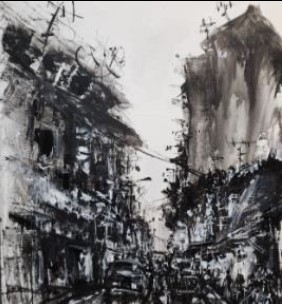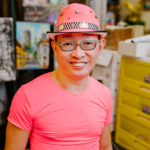In his 1822 Master Town Plan, Sir Stamford Raffles allocated the whole area west of the Singapore River for a Chinese settlement known as the Chinese Campong, envisaging that Chinese would form the bulk of future town dwellers. Singapore, the new land of opportunity then, had attracted many Chinese immigrants, who expanded the original boundaries of this economically and culturally vibrant, self-contained town. This self-contained kampong (community settlement) became home to many Chinese immigrants, and a transit point for coolies (unskilled labourers) going to Malaya.
The original kampong was divided into zones for each Chinese community of the same provincial origin and dialect group. The Cantonese occupied Temple Street. The Hokkiens were located in Telok Ayer Street and Hokkien Street, while the Teochews were settled in South Canal Road, Garden Street and Carpenter Street. Different trades were also confined to specific areas, so each street took on its own identity. From delicacies to death-houses, there were businessmen, traders, craftsmen, hawkers and peddlers to provide all of the peoples’ needs.
Monochrome Reflections: A Chinatown Tribute
| Artist | |
|---|---|
| Dimensions | 920 × 1140 mm |
| Medium | Acrylic on Canvas |
| Year | 2021 |
$7,800.00
Shipping and Delivery
*FREE DELIVERY FOR SINGAPORE ORDERS ABOVE $2000 IN A SINGLE RECEIPT.*
Delivery and installation fee is $155 for first piece and $60 (below size of 1800mm and $100 above size of 1800mm) for each subsequent piece within Singapore. Learn more
Be covered by the Gallery 1819 Guarantee when you checkout with Gallery 1819
In his 1822 Master Town Plan, Sir Stamford Raffles allocated the whole area west of the Singapore River for a Chinese settlement known as the Chinese Campong, envisaging that Chinese would form the bulk of future town dwellers. Singapore, the new land of opportunity then, had attracted many Chinese immigrants, who expanded the original boundaries of this economically and culturally vibrant, self-contained town. This self-contained kampong (community settlement) became home to many Chinese immigrants, and a transit point for coolies (unskilled labourers) going to Malaya.
The original kampong was divided into zones for each Chinese community of the same provincial origin and dialect group. The Cantonese occupied Temple Street. The Hokkiens were located in Telok Ayer Street and Hokkien Street, while the Teochews were settled in South Canal Road, Garden Street and Carpenter Street. Different trades were also confined to specific areas, so each street took on its own identity. From delicacies to death-houses, there were businessmen, traders, craftsmen, hawkers and peddlers to provide all of the peoples’ needs.



